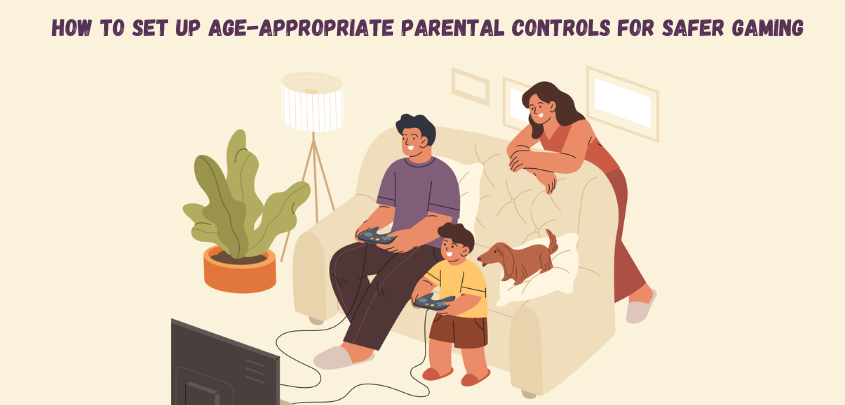
26, Sep, 2024
How to Set Up Age-Appropriate Parental Controls for Safer Gaming
Setting up parental controls for your child’s gaming experience ensures safety and helps manage exposure to inappropriate content. Tailoring controls to age is crucial for balanced supervision. Here’s how to apply them for different age groups:
For Ages 6-9 (Early Gamers)
- Restrict Mature Content: Block games with violence, mature themes, or strong language. Use built-in filters on consoles like PlayStation, Xbox, and Nintendo Switch to limit access to age-inappropriate content.
- Disable Online Play: Limit multiplayer and online interactions. Turn off chat and multiplayer features completely to prevent exposure to strangers.
- Set Screen Time Limits: Establish daily screen time limits (30-60 minutes). Platforms like Xbox and PlayStation offer parental timers to automatically enforce limits.
For Ages 10-12 (Pre-Teens)
- Monitor Online Friends: Allow only real-life friends in their gaming network. Many platforms require parental approval for friend requests, including consoles and PCs.
- Enable Safe Chat: Games like Minecraft and Roblox offer safe chat modes that restrict the language and conversations allowed.
- Limit In-Game Purchases: Prevent unauthorized spending by setting up password protection for in-game purchases, especially on mobile devices and console stores.
- Manage Discord Access: If your child uses Discord, enable NSFW content filters and turn off DMs from non-friends. Regularly review server memberships to ensure they’re appropriate.
For Ages 13-15 (Teens)
- Limit Inappropriate Content: Keep content filtering set for teen-friendly games. Review ratings from ESRB or PEGI to ensure they meet your standards.
- Monitor Playtime & Balance: Allow more flexibility but continue to set reasonable limits to balance gaming with other responsibilities like homework or social time.
- Teach Online Safety: Teens should be aware of the risks of interacting with strangers. Encourage them to use private profiles and report inappropriate behavior, especially on platforms like Discord.
- Safe Discord Usage: If they use Discord for gaming communities, make sure they’re part of moderated servers, using privacy settings that block DMs from strangers and content filters.
For Ages 16+ (Young Adults)
- Maintain Privacy Awareness: Encourage your child to continue using private accounts and avoid oversharing personal details. Discord has options to restrict who can send DMs or invite them to servers.
- Budget In-App Spending: Educate them on responsible spending habits within games. Use payment controls or limits in app stores and gaming platforms to track purchases.
- Foster Balance: While teens have more autonomy, encourage them to keep gaming in balance with offline activities like exercise, socializing, and academics.
By implementing tailored controls across gaming consoles, mobile devices, and even communication platforms like Discord, you can ensure your child has a safer and more balanced online gaming experience as they grow.
